[/caption]
A new world in our Solar System is about to be unveiled for the first time – the mysterious protoplanet Vesta, which is the second most massive object in the main Asteroid Belt between Mars and Jupiter.
NASA’s Dawn Asteroid orbiter has entered its final approach phase to Vesta and for the first time is snapping images that finally exceed those taken several years ago by the iconic Hubble Space Telescope.
“The Dawn science campaign at Vesta will unveil a mysterious world, an object that can tell us much about the earliest formation of the planets and the solar system,” said Jim Adams, Deputy Director, Planetary Science Directorate at NASA HQ at a briefing for reporters.
Vesta holds a record of the earliest history of the solar system. The protoplanet failed to form into a full planet due to its close proximity to Jupiter.
Check out this amazing NASA approach video showing Vesta growing in Dawn’s eyes. The compilation of navigation images from Dawn’s framing camera spans about seven weeks from May 3 to June 20 was released at the NASA press briefing by the Dawn science team.
Dawn’s Approach to Vesta – Video
Best View from Hubble – Video
Be sure to notice that Vesta’s south pole is missing due to a cataclysmic event eons ago that created a massive impact crater – soon to be unveiled in astounding clarity. Some of that colossal debris sped toward Earth and survived the terror of atmospheric entry. Planetary Scientists believe that about 5% of all known meteorites originated from Vesta, based on spectral evidence.
After a journey of four years and 1.7 billion miles, NASA’s revolutionary Dawn spacecraft thrusting via exotic ion propulsion is now less than 95,000 miles distant from Vesta, shaping its path through space to match the asteroid.
The internationally funded probe should be captured into orbit on July 16 at an initial altitude of 9,900 miles when Vesta is some 117 million miles from Earth.
After adjustments to lower Dawn to an initial reconnaissance orbit of approximately 1,700 miles, the science campaign is set to kick off in August with the collection of global color images and spectral data including compositional data in different wavelengths of reflected light.
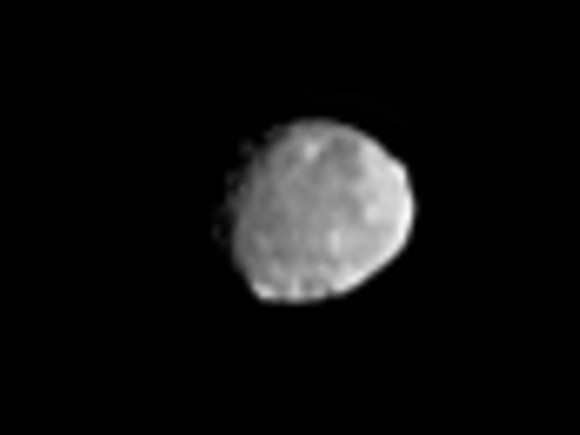
Dawn obtained this image on June 20, 2011. Credit: NASA/JPL-Caltech/UCLA/MPS/DLR/PSI and NASA/ESA/STScI/UMd
Dawn will spend a year investigating Vesta. It will probe the protoplanet using its three onboard science instruments – provided by Germany, Italy and the US – and provide researchers with the first bird’s eye images, global maps and detailed scientific measurements to elucidate the chemical composition and internal structure of a giant asteroid.
“Navigation images from Dawn’s framing camera have given us intriguing hints of Vesta, but we’re looking forward to the heart of Vesta operations, when we begin officially collecting science data,” said Christopher Russell, Dawn principal investigator, at the University of California, Los Angeles (UCLA). “We can’t wait for Dawn to peel back the layers of time and reveal the early history of our solar system.”
Because Dawn is now so close to Vesta, the frequency of imaging will be increased to twice a week to achieve the required navigational accuracy to successfully enter orbit., according to Marc Rayman, Dawn Chief Engineer at the Jet Propulsion Laboratory (JPL) in Pasadena, Calif.
“By the beginning of August, it will see Vesta with more than 100 times the clarity that Hubble could ever obtain,” says Rayman.
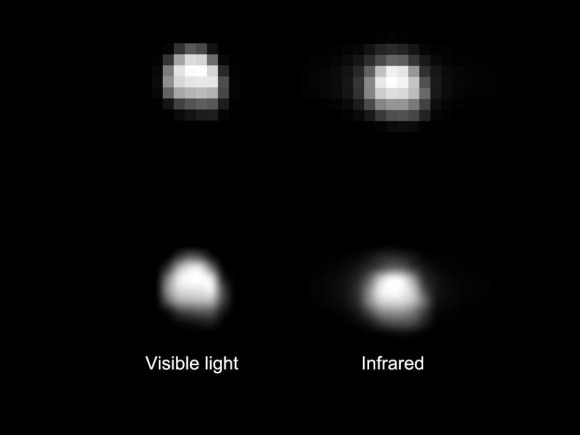
On June 8, 2011, the visible and infrared mapping spectrometer aboard NASA's Dawn spacecraft captured the instrument's first images of Vesta that are larger than a few pixels, from a distance of about 218,000 miles (351,000 kilometers). The image was taken for calibration purposes. An image obtained in the visible part of the light spectrum appears on the left. An image obtained in the infrared spectrum, at around 3 microns in wavelength, appears on the right. The spatial resolution of this image is about 60 miles (90 kilometers) per pixel. Credit: NASA/JPL-Caltech/UCLA/ASI/INAF
Dawn will gradually edge down closer to altitudes of 420 miles and 120 miles to obtain ever higher resolution orbital images and spectal data before spiraling back out and eventually setting sail for Ceres, the largest asteroid of them all.
Dawn will be the first spacecraft to orbit two celestial bodies, only made possible via the ion propulsion system. With a wingspan of 65 feet, it’s the largest planetary mission NASA has ever launched.
“We’ve packed our year at Vesta chock-full of science observations to help us unravel the mysteries of Vesta,” said Carol Raymond, Dawn’s deputy principal investigator at JPL.
“This is an unprecedented opportunity to spend a year at a body that we know almost nothing about,” added Raymond. “We are very interested in the south pole because the impact exposed the deep interior of Vesta. We’ll be able to look at features down to tens of meters so we can decipher the geologic history of Vesta.”
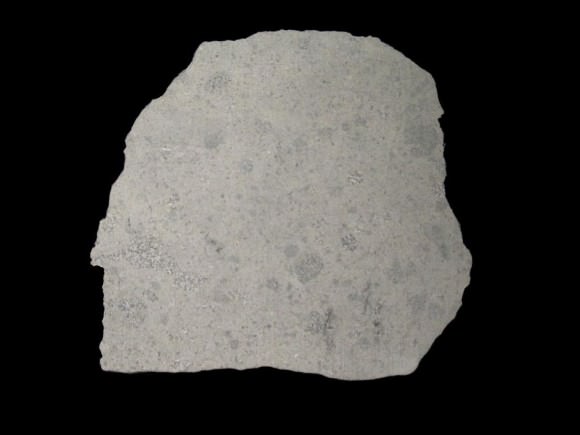
Scientists believe a large number of the meteorites that are found on Earth originate from the protoplanet Vesta. A cataclysmic impact at the south pole of Vesta, the second most massive object in the main asteroid belt, created an enormous crater and excavated a great deal of debris. Some of that debris ended up as other asteroids and some of it likely ended up on Earth. Image Credit: NASA/JPL-Caltech
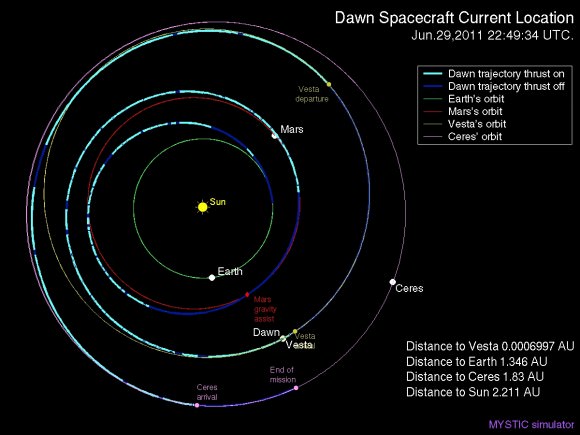

Read my prior feature about Dawn here

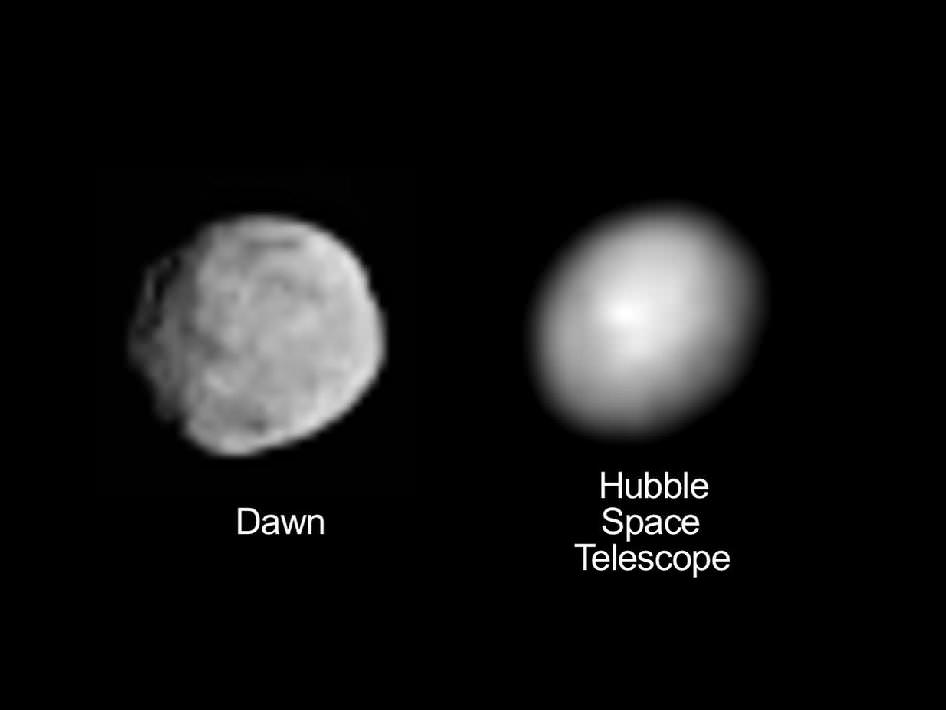
Mr. KEN KREMER, thanks for the info, I am very interested in Dawn Mission. Very exiting!!!
Though, if I may point out a detail, Ceres is a Dwarf Planet and not an asteroid.
Thanks again,
This article was ruined at the seventh paragraph with this sentence: “Planetary Scientists believe that…”
Perhaps a better way of wording it would have been “Evidence suggests…”, but it’s not as though it’s factually incorrect. Scientists are allowed to have evidence-based beliefs, and many popular science outlets use the phrase “Scientists believe….”
In any case, saying that the article is ruined is just hyperbole.
Alas, it’s just one of good ole Ivan’s pet peeves, though a touch dramatic. I didn’t even notice it myself because I got stuck on Ceres, my favorite little dwarf, being referred to as an asteroid.
That’s my pet peeve – bad journalism by non-scientific journalists!
OMG! Dawn reveals a face on Vesta! You can see the beady little eyes as it revolves. Where is Hoagland now that we really need him?
OMG, Dawn’s video shows a face on Vesta! You can see its beady eyes as it rotates! Where is Hoagland when we really need him?
OMG, Dawn’s video shows a face on Vesta! You can see its beady eyes as it rotates! Where is Hoagland when we really need him?
Vesta is also called an asteroid in the title…
Amazing vid. Naive question: what keeps Dawn from being damaged/destroyed by space debris on an amazing 1.7m mile journey?
The scarcity of debris in relation to the volume of space.
still amazing to me. you’d think there’d be a cosmic speed bump somewhere.